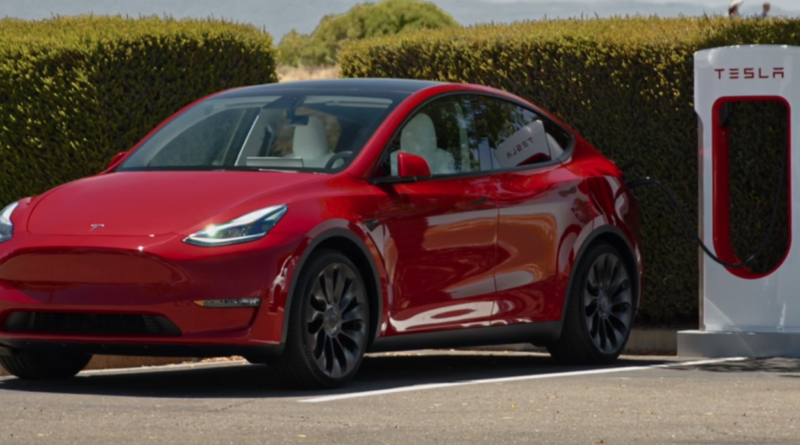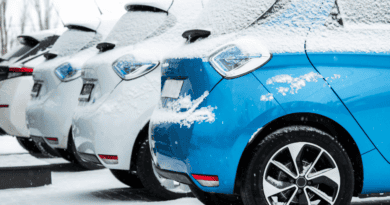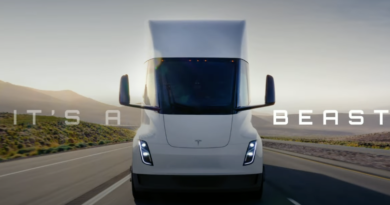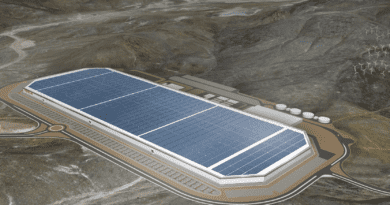What is a Tesla Supercharger? A Comprehensive Guide
Tesla has made remarkable strides in expanding its Supercharger network over the years, transforming long-distance travel for electric vehicle owners. From a modest start, the Supercharger network has grown exponentially, now boasting over 50,000 Superchargers worldwide. Strategically placed along popular travel routes and near essential amenities such as restaurants, shops, and Wi-Fi hotspots, these charging stations ensure that Tesla drivers can recharge quickly and conveniently, making electric vehicle ownership more practical and enjoyable than ever before. This rapid expansion underscores Tesla’s commitment to advancing sustainable transportation and supporting its growing community of users. The Supercharger network refers to all Tesla Superchargers worldwide, owned and operated exclusively by Tesla. Unlike other charging networks managed by third parties, Tesla maintains full control over its Supercharger infrastructure.
What is Tesla Supercharger?
Superchargers are the perfect solution for long-distance travel, designed to quickly charge your Tesla vehicle so you can get back on the road without much delay. For your daily commutes or local driving needs, home charging options are more appropriate and convenient.
The charging speed of your Tesla vehicle with a Supercharger varies slightly depending on the model. For instance, the Model S can gain up to 200 miles in just 15 minutes of charging. The Model 3 and Model X can each add up to 175 miles in the same time frame. If you drive a Model Y, you can expect up to 162 miles of range in 15 minutes, while the Cybertruck can gain up to 136 miles. It’s important to note that Roadsters currently do not have Supercharging capabilities.
Using a Supercharger is straightforward. Simply plug the charging connector into your vehicle’s charge port, and the port’s LED will flash green to indicate that charging has begun. You can monitor your charging progress conveniently through the Tesla app. Once you’re done and unplug your vehicle, the payment will be processed automatically using the payment method saved in the app.
When it comes to charging to 100%, your vehicle’s navigation system will recommend the necessary charge level to reach the next Supercharger on your route. To help reduce congestion at busy Superchargers, your vehicle’s charge limit might be automatically set to 80%. You do have the option to manually increase this limit through the touchscreen or the Tesla app, but keep in mind that charging speeds slow down as the battery gets closer to 100%, making it take significantly longer to reach full charge compared to 80%.

If you’re borrowing or renting a Tesla, you can still use Superchargers just as you would with an owned vehicle. The cost of the Supercharging session will be charged to the payment method designated by the vehicle owner in the Tesla app, so make sure you have the owner’s authorization to use it. Remember, only the vehicle owner can add or change the payment method in the app.
How to find Tesla Supercharger?
Tesla’s interactive Trip Planner helps you easily locate Supercharger sites while driving. To enable Trip Planner, go to ‘Settings’ > ‘Navigation’ > ‘Trip Planner’ on your vehicle’s touchscreen. Once you’ve chosen a site, the navigation system will direct you to the property’s entrance. You can then zoom in on the map to find the precise location of the station. For more details, tap the station’s red lightning bolt icon on the touchscreen. By entering your destination into the map, Trip Planner will add Supercharger locations to your route as needed, based on your current battery level. This feature is also available in the Tesla app.
Supercharger stations are accurately marked with GPS in the touchscreen navigation system, ensuring precise directions. Your vehicle’s navigation will lead you to the entrance, and zooming in on the map will show the exact station location. Additional instructions, such as gate codes, parking levels, and peak hours, can be accessed by tapping the station’s red pin.
Most Supercharger stations operate 24/7, although nearby amenities follow their respective business hours. If a Supercharger station has limited hours, this information will be shown on the touchscreen when you select the site.

How much does Tesla Supercharger cost?
Supercharging costs can be viewed directly on your vehicle’s touchscreen by selecting the Supercharger site’s pin, which displays specific pricing for that location. After your charging session is complete, an estimate of the final charges appears on the screen. Prices may change periodically and include all taxes and fees. The charging rate is determined by the plug-in time and remains fixed during the session, even if prices change. Some Supercharger stations offer different rates for peak and off-peak times, which are displayed in the vehicle’s navigation application.
To view and download your Supercharging invoices, open the Tesla app, tap the menu in the top-right corner, select ‘Charging,’ then ‘Charging History.’ You can download invoices by tapping the download icon and specifying the invoice date, vehicle, and file type.
Supercharging pricing is generally billed per kilowatt-hour (kWh) where possible, or per minute in other areas. When billed per minute, there are four pricing tiers based on charging speeds: Tier 1 (at or below 60 kW) offers the lowest price, Tier 2 (above 60 kW, at or below 100 kW) the second-lowest, Tier 3 (above 100 kW, at or below 180 kW) the second-highest, and Tier 4 (above 180 kW) the highest price per minute.
What is Time of Use (TOU) pricing for Tesla Supercharger?
Time-of-use (TOU) pricing means that the cost of Supercharging varies depending on the time of day at certain Supercharger stations. During peak hours, the cost is higher than during off-peak hours. Prices and peak times are displayed in the vehicle’s navigation application and the Tesla app. Once you plug in, the charging rate is fixed and does not change during the session, even if prices change.
What is Supercharging membership?
A Supercharging Membership enables other electric vehicles (non-Tesla) to use Superchargers at the same price as Tesla owners. This membership is intended for non-Tesla EVs, and Tesla owners do not require it. The membership benefits apply to all EVs owned by the member, so there is no need to purchase separate memberships for each vehicle. Note that price adjustments may apply at select Supercharger sites.
How to check for free Supercharging Credits?
To check if you have free Supercharging credits available, open the Tesla app, tap the menu in the top-right corner, and select ‘Charging.’ These credits, offered through Tesla’s referral programs, expire two years after your delivery date and are not transferable. Once they expire, they will no longer appear in the app. For confirmation, you can also tap ‘Specs and Warranty’ in the app. When you run out of free Supercharging credits, standard Supercharger fees will apply.
What is V3 Superchargers vs V4 Superchargers?
V3 Superchargers can deliver peak charge rates of up to 250kW, though not all Tesla vehicles can receive this maximum charge. The actual charging rate depends on factors such as the battery pack’s size and age, state of charge, ambient temperature, and vehicle configuration.
V4 Supercharging, first introduced in Harderwijk, the Netherlands, in March 2023, also supports peak rates of up to 250kW per vehicle. V4 Superchargers feature longer cables for easier access by all EVs and allow for updates and new features.
Tips for Tesla Supercharger Troubleshooting?
If you’re unable to use a Supercharger, ensure you have downloaded the Tesla app, added a payment method, and designated a Supercharger payment method in the app. Make sure the connection between the Supercharger and your vehicle is secure. If you bought your Tesla from a third party, you must be listed as the vehicle owner to manage Supercharging payments.
If your Supercharging speed is slower than expected, it may be due to factors like battery charge level, battery temperature, current Supercharger use, and extreme climate conditions. Charging is faster when the battery is at a lower state of charge and slows as it fills up. Fully charging your battery is often unnecessary depending on your destination.
For problems while using a Supercharger, note that they are monitored and serviced regularly by Tesla technicians. If you encounter a broken or inoperative Supercharger, use another one at the same location. For issues with the charging cable, refer to Tesla’s do-it-yourself guides for quick fixes.
Can non-tesla cars use Tesla Supercharger?
Yes, non-Tesla cars can use Tesla Superchargers at certain locations. Tesla has started to open its Supercharger network to other electric vehicles through a pilot program in select regions. Non-Tesla EV owners can access these Superchargers by downloading the Tesla app, creating an account, and adding a payment method. It’s important to check the Tesla website or app for specific locations where this service is available, as it may not be universally accessible yet.
Tesla has expanded its Supercharger network to include several other automakers, significantly increasing its charging infrastructure’s reach. Companies like Ford, General Motors (GM), and Kia are now part of this network. Ford and GM began accessing the Superchargers in 2024 and plan to incorporate Tesla’s North American Charging Standard (NACS) plug into their vehicles by 2025. Kia will start offering Supercharger access for new models by late 2024 and will provide adapters for existing models by 2025.
What is Tesla Magacharger?
The Tesla Megacharger is a high-powered charging station designed specifically for the Tesla Semi, an electric heavy-duty truck. Unlike standard Superchargers, Megachargers can deliver much higher power levels, aiming to recharge the Semi’s large battery pack quickly and efficiently. This rapid charging capability is essential for minimizing downtime for long-haul trucking operations, allowing the Semi to be back on the road with minimal delay.
These Megachargers are capable of delivering extremely high power levels, with early reports suggesting a capacity of 750 to 1,000 kW, allowing the Tesla Semi to add up to 400 miles of range in just 30 minutes
Tesla plans to strategically install Megachargers along major trucking routes and at key logistics hubs to facilitate long-distance electric freight transport. Each Megacharger station will be equipped to handle the unique energy requirements of the Tesla Semi, ensuring that these vehicles can maintain long operational ranges without extended charging times.

The introduction of Megachargers is a crucial step in Tesla’s broader strategy to promote sustainable transportation solutions and reduce the carbon footprint of the logistics and freight industry. By providing a robust charging infrastructure for electric trucks, Tesla aims to make electric freight transport not only feasible but also practical and economically viable.
As of May 2024, Tesla has been actively developing and deploying its Megacharger network designed for the Tesla Semi electric trucks. This includes both permanent and mobile charging stations. Currently, Tesla has installed Megacharger stations at strategic locations, including its Gigafactory in Nevada and a Supercharger station in Baker, California, which serves as a key route between Los Angeles and Las Vegas.




